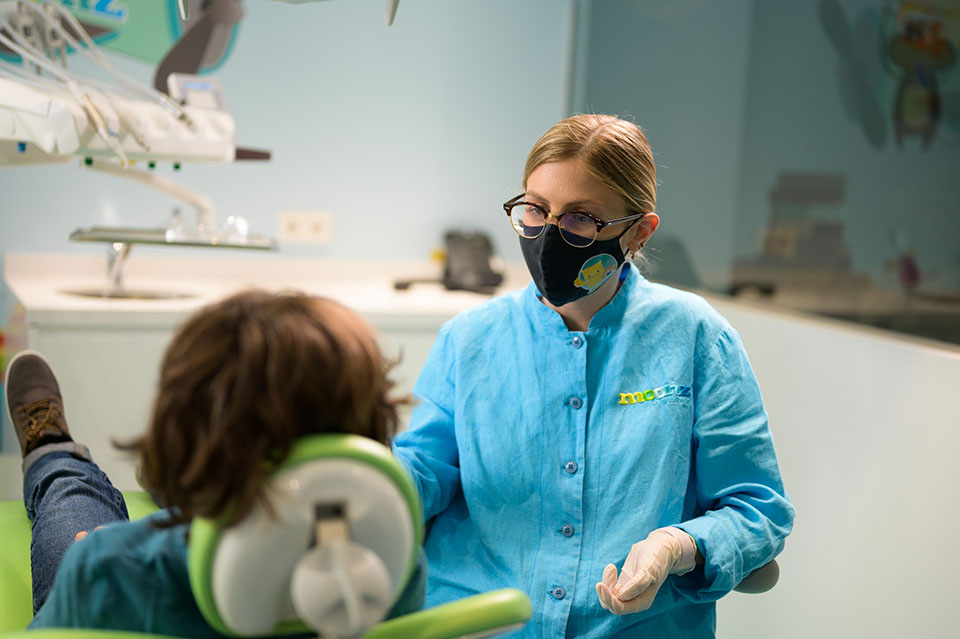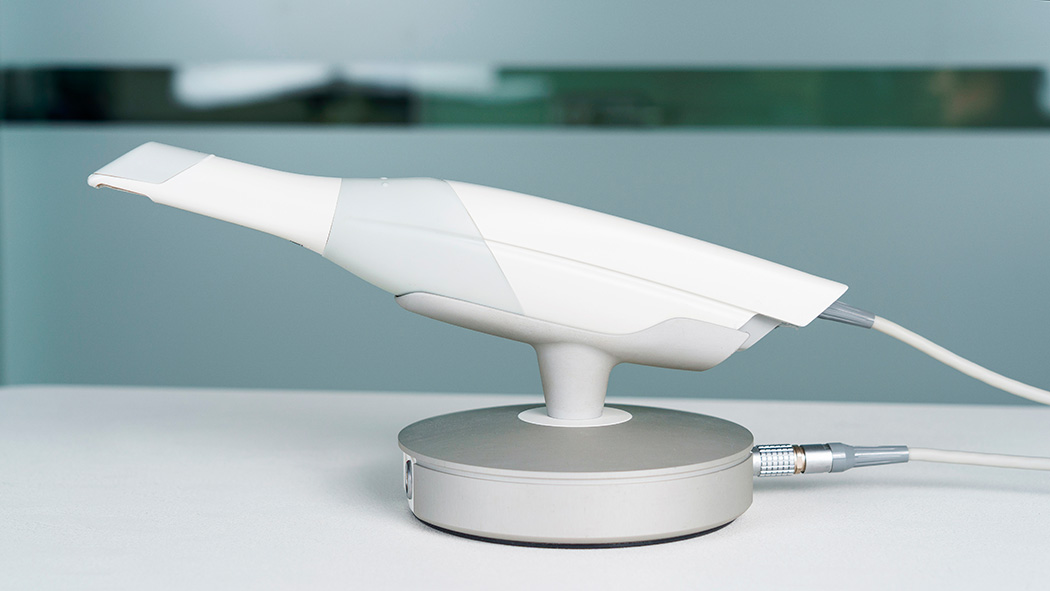The dental circuit breaker is one of the most common appliances in interceptive orthodontics, whose main aim is to treat problems of transversal and sagittal malocclusion at an early age with the help of other appliances.
Interceptive orthodontics is a form of paediatric orthodontics that aims to control the development of the bony structures during the growth phase, i.e. the mandible and maxilla, in order to prevent bite problems later on.
In the following article, we will explain the main features of the dental disjunctor: how it works, the phases of treatment and the duration of use.
WHAT IS A DENTAL EXPANDER?
The dental disjunctor or palatal expander is a device widely used in paediatric orthodontics. It is used to enlarge the palate to correct various problems of the lower or upper jaw during the growth phase of children.
These problems often result from a narrow, deep, centrally arched palate, a very pronounced upper jaw or an excessively large lower jaw
This abnormal growth is usually due to genetic or environmental factors, such as mouth breathing, thumb sucking or prolonged wearing of dummies.
If not treated in time, it can lead to misaligned teeth, crowding, crossbites and even breathing problems.
HOW DOES A DENTAL DISJUNCTOR WORK?
The disjunctor consists of a fixed orthodontic appliance that is placed on the permanent molars, the back temporary teeth or the last premolars. It consists of two symmetrical parts made of metal, tape or acrylic that hermetically fit the teeth and are connected by a screw in the central part of the palate
This screw exerts pressure on both sides of the upper jaw, loosening and widening them, which also widens the floor of the nostrils and improves nasal breathing.
This treatment is usually performed on patients who are still growing, i.e. between 7 and 12 years old, so that the disjunctor helps the jawbone to grow properly.
WHAT ARE THE STAGES OF TREATMENT?
As with any orthodontic treatment, a preliminary examination of the patient is carried out to determine the appropriate treatment and the guidelines to be followed
If the paediatric dentist or orthodontist deems it necessary, the steps indicated will be carried out.
PHASES OF TREATMENT WITH A DENTAL DISJUNCTOR
- Examination: a series of intraoral and extraoral photographs, X-rays and models of the child’s mouth are taken using an intraoral scanner or alginate (the material from which impressions are made).
- Fitting: Once measurements have been taken, the braces can be fitted using orthodontic software.
- Insertion: The orthodontist places the appliance on the roof of the child’s mouth and attaches it to the upper molars. He shows the parents how to activate the appliance (by turning the screw as often as necessary).
- Treatment: During this period, which lasts 20-30 days, the necessary adjustments are made to the appliance so that it can exert enough pressure to widen the upper arch transversely. It is very common for a diastema (separation between teeth) to appear on the central incisors during this phase due to the upper width achieved.
- Maintenance: Once the activation phase is completed, the dental interrupter is blocked to maintain the results achieved in the previous phase and to prevent relapse. The appliance should be worn for at least six months. After that, it can be assessed whether a fixed appliance or a retention appliance is also needed.
- Sometimes this period is used to perform sagittal traction with hooks on the front of the appliance.
HOW LONG IS THE DENTAL DISJUNCTOR USED?
The estimated time for using the dental disjunctor is short, because the activation phase, i.e. the period during which the parents adjust the disjunctor daily to the child’s needs and the programmed guidelines, lasts 20 to 30 days.
However, once this phase of treatment is completed, regular check-ups with the orthodontist are necessary to monitor the evolution of the treatment until six months after activation.
This period can vary from six months to a year depending on the situation of the individual patient.
In this way, the results of the braces can be seen after only a few weeks, as children are still in the middle of bone development and this growth can be stimulated.

WHAT ARE THE REASONS WHY A DENTAL DISJUNCTOR IS NEEDED?
There are several reasons why a dental scaler may be necessary:
Narrow or pointed palate: This is a malformation of the upper oral cavity. The palate is usually narrower and deeper than normal.
Tooth enlargement: This affects the normal growth of the teeth as they do not have enough space. It can also lead to compression when replacing teeth and the development of tooth decay or periodontitis due to poor oral hygiene
Crossbite: This is a form of malocclusion usually due to a narrow palate. It is a change in the direction of the teeth of both dental arches so that the teeth of the lower arch are outside the upper arch when the mouth is closed.
Breathing problems: This is usually one of the complications of a narrow palate. This is because the air does not get into the lungs properly, which can lead to wheezing, snoring and even difficulty breathing through the nose as it helps with mouth breathing.
HOW TO CLEAN A DENTAL CIRCUIT BREAKER?
Good oral hygiene is essential when using a dental scaler. The build-up of bacterial plaque can lead to gingivitis or tooth decay, making it difficult to use the palate expander.
It is therefore important that you brush your teeth at least three times a day and use a mouthwash, paying particular attention to the roof of your mouth. It is also advisable not to chew sticky foods such as sweets or chewing gum, as this can damage the dental expander and cause it to become loose.
BENEFITS OF USING A DENTAL DISJUNCTOR
One of the main benefits of treatment with the dental disjunctor is the widening of the upper jaw and consequently the widening of the lower part of the nostrils, which allows better breathing. It is a treatment that shows quick and easy results in just a few weeks
It is important to treat this type of problem at an early stage, as this can prevent irreversible conditions in adulthood, which usually require surgery, in the future.
Therefore, parents should know the importance of taking their child to a paediatric dentist or orthodontist at an early stage to detect this type of abnormality in dentofacial development.




























